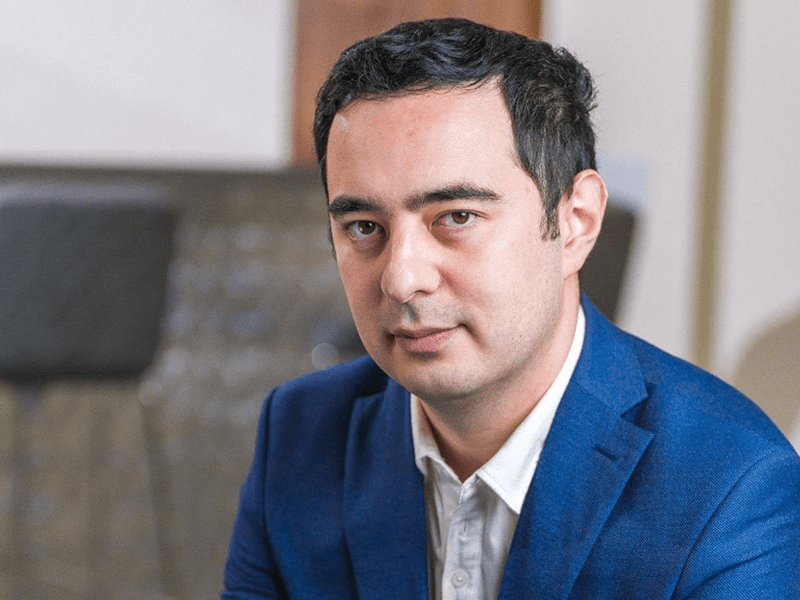Furkat Kasimov, a serial entrepreneur, has spent years advising leadership teams on how to extract measurable value from artificial intelligence pilots. His central idea is expressed in a simple equation: AI + HI = PI. Artificial intelligence combined with human intelligence results in productivity improvements that companies can measure and bank.
For Kasimov, this is not an abstract principle. He argues that boards of medium and large companies must treat this formula as an operational practice. The task is not simply to adopt AI tools but to translate them into workflows that deliver real outcomes at scale. He emphasizes that many pilots fail not because the technology is weak but because the work itself is not reimagined.
Rather than layering a bot on top of existing processes, Kasimov advises beginning with work observation. He tells boards to expect management teams to sit with employees, watch their clicks, their copy-and-paste routines, their pauses, and their exceptions. From this observation, he recommends producing two maps: one showing the as-is workflow, the other the machine-native workflow. The first illustrates today’s process with all its dependencies and slowdowns, while the second shows how the same work could operate once repetitive steps are automated and judgment is left to people. If the two maps look identical, Kasimov warns, the company is not funding progress but paying for novelty.
Building the data wheel for continuous learning
Central to Kasimov’s guidance is the concept of the data wheel, a closed-loop system that allows an AI pilot to learn and improve continuously. He describes the wheel in five verbs: instrument, learn, act, measure, and repeat. Each cycle compounds knowledge and performance.
To instrument, the company must define the unit of work—a ticket, an order, a lead, or a creative brief—and capture the full set of timestamps, decisions, human overrides, and outcomes. From there, the learning phase begins by comparing machine-driven paths with human paths, identifying where delays and errors emerge.
Action follows when those findings are fed back into prompts, thresholds, playbooks, and handoffs, embedding them directly into workflows rather than slide decks. Measurement must take place in the same unit first defined, with clear reconciliation in finance. If hours are saved, if conversions improve, if cash is collected faster, the evidence must be traceable. The wheel then turns again, repeating weekly, so the system compounds gains over time.
Kasimov is clear that a pilot without a data wheel is little more than guesswork. Boards, in his view, should expect to see this loop drawn on a single page, with transparency on where the data comes from, who curates it, and how quickly it turns. Anything less is insufficient for scaling with discipline.
Defining measurement and governance from the start
Kasimov maintains that measurement must be defined before a build begins. This does not require complex mathematics, but it does require rigor. He advises boards to ask for a written test plan that identifies the control method, whether a holdout group, geo split, or other technique, and shows how external factors like seasonality and pricing will be accounted for. Adoption tracking is equally important. As he puts it, “If no one uses the tool, there is no value. If adoption is high but results are flat, the design is wrong. If results are strong but attribution is vague, the report is theater.”
For Kasimov, good reporting to the board should contain three consistent elements: first, a clear explanation of why the pilot was selected and how it connects directly to revenue, cost, or working capital; second, the two maps—the as-is and the machine-native—so that the redesign is visible and easy to explain; and third, evidence that demonstrates usage, outcomes, and the profit effect after costs, including risks encountered and guardrails applied.
Governance, in his framework, is not an obstacle but a safeguard. He recommends simple, written guardrails that define confidence thresholds, escalation procedures for privacy or compliance issues, and version-controlled libraries of prompts and playbooks. These steps keep pilots fast while protecting against reputational surprises.
The cadence of pilots and the role of boards
Kasimov’s experience has taught him that AI pilots must move in weeks, not quarters, while maintaining quality controls. He sets out a rhythm: Week one maps the work and sets the baseline; week two establishes the machine-native flow and instrumentation; week three runs controlled tests and tunes thresholds; weeks four and five deliver readouts and decisions. The goal is not speed for its own sake but speed with structured learning.
He points to areas where value tends to appear fastest. In customer channels, AI can respond immediately to inquiries, classify intent, and resolve routine issues, with humans stepping in for empathy and exceptions. In marketing, AI generates on-brand variations and supports experimentation at scale, while humans guide narrative and trade-offs. In finance operations, AI drafts outreach, segments accounts, and schedules next actions, leaving disputes and policy exceptions to people. Across these domains, Kasimov highlights shorter cycles, stronger containment, fewer errors, and cleaner cash, all tangible productivity gains.
The questions boards should ask, he argues, are straightforward but revealing: Where are the two maps? Where is the data wheel? How is adoption measured? What changed in the workflow once AI was introduced? How were external shifts, such as seasonality, managed? What is the net effect on profit after ongoing costs? What happens to the hours saved? Without answers, value remains theoretical.
Kasimov closes his guidance by urging boards to treat each AI pilot as if it were a small business, with its own customer, cost to serve, and learning loop. Discipline, he believes, is the only path to durable gains. “AI + HI = PI is not a slogan,” he reminds the board. “It is a design choice, a measurement habit, and a governance practice. Show me the map. Show me the wheel. Do that, and you move beyond pilot theater into results your P&L and your customers will feel.”
Note: This content was created by Furkat Kasimov.
